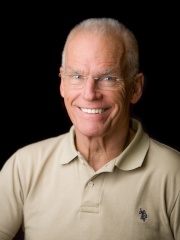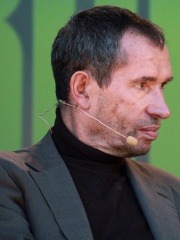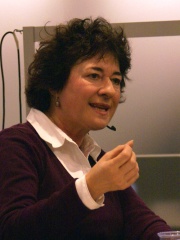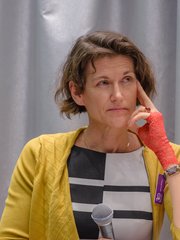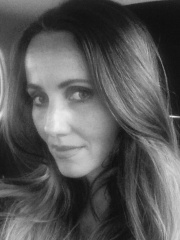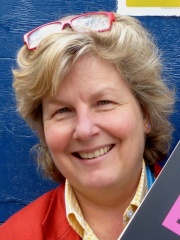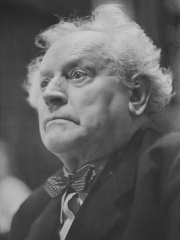
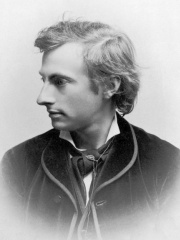
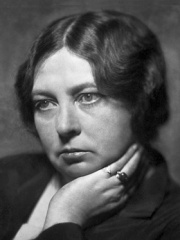
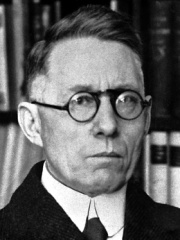
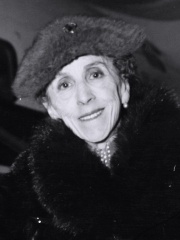
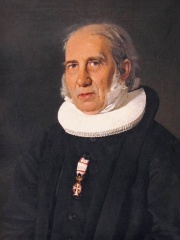
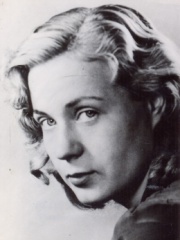
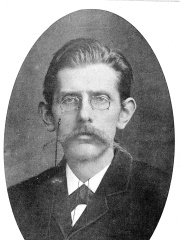
The Most Famous
WRITERS from Denmark
This page contains a list of the greatest Danish Writers. The pantheon dataset contains 7,302 Writers, 53 of which were born in Denmark. This makes Denmark the birth place of the 27th most number of Writers behind Canada, and Switzerland.
Top 10
The following people are considered by Pantheon to be the top 10 most legendary Danish Writers of all time. This list of famous Danish Writers is sorted by HPI (Historical Popularity Index), a metric that aggregates information on a biography's online popularity. Visit the rankings page to view the entire list of Danish Writers.

1. Hans Christian Andersen (1805 - 1875)
With an HPI of 90.14, Hans Christian Andersen is the most famous Danish Writer. His biography has been translated into 180 different languages on wikipedia.
Hans Christian Andersen ( AN-dər-sən, Danish: [ˈhænˀs ˈkʰʁestjæn ˈɑnɐsn̩, - ˈkʰʁæs-] ; 2 April 1805 – 4 August 1875) was a Danish author. Although a prolific writer of plays, travelogues, novels, and poems, he is best remembered for his literary fairy tales. Andersen's fairy tales, consisting of 156 stories across nine volumes, have been translated into more than 125 languages. They have become embedded in Western collective consciousness, accessible to children as well as presenting lessons of virtue and resilience in the face of adversity for mature readers. His most famous fairy tales include "The Emperor's New Clothes", "The Little Mermaid", "The Nightingale", "The Steadfast Tin Soldier", "The Red Shoes", "The Princess and the Pea", "The Snow Queen", "The Ugly Duckling", "The Little Match Girl", and "Thumbelina." Andersen's stories have inspired ballets, plays, and animated and live-action films.

2. Karl Adolph Gjellerup (1857 - 1919)
With an HPI of 79.92, Karl Adolph Gjellerup is the 2nd most famous Danish Writer. His biography has been translated into 81 different languages.
Karl Adolph Gjellerup (Danish: [ˈkʰɑˀl ˈɛːˌtʌlˀf ˈkelˀəʁɔp]; 2 June 1857 – 11 October 1919) was a Danish poet and novelist who together with his compatriot Henrik Pontoppidan won the Nobel Prize in Literature in 1917. He is associated with the Modern Breakthrough period of Scandinavian literature. He occasionally used the pseudonym Epigonos.

3. Sigrid Undset (1882 - 1949)
With an HPI of 78.56, Sigrid Undset is the 3rd most famous Danish Writer. Her biography has been translated into 99 different languages.
Sigrid Undset (Norwegian pronunciation: [ˈsɪ̂ɡːɾiː ˈʉ̂nːseːt]; 20 May 1882 – 10 June 1949) was a Danish-born Norwegian novelist. She was awarded the Nobel Prize for Literature in 1928. Born in Denmark and raised in Norway, Undset had her first books of historical fiction published in 1907. She fled Norway for the United States in 1940 because of her opposition to Nazi Germany and the German invasion and occupation of Norway, but returned after the end of World War II in Europe in 1945. Her best-known work is Kristin Lavransdatter, a trilogy about life in Norway in the Middle Ages, portrayed through the experiences of a woman from birth until death. Its three volumes were published between 1920 and 1922.

4. Johannes V. Jensen (1873 - 1950)
With an HPI of 78.43, Johannes V. Jensen is the 4th most famous Danish Writer. His biography has been translated into 81 different languages.
Johannes Vilhelm Jensen (Danish pronunciation: [joˈhænˀəs ˈvilhelˀm ˈjensn̩]; 20 January 1873 – 25 November 1950) was a Danish author, known as one of the great Danish writers of the first half of 20th century. He was awarded the 1944 Nobel Prize in Literature "for the rare strength and fertility of his poetic imagination with which is combined an intellectual curiosity of wide scope and a bold, freshly creative style". One of his sisters, Thit Jensen, was also a well-known writer and a very vocal, and occasionally controversial, early feminist. Jensen began his literary career by writing pulp fiction, but he made the move into more serious literature by the late 1890s. His early novels depict his disillusionment with large, modern cities. His historical novel The Fall of the King (1933) focuses on King Christian II. It was reportedly an "indictment of Danish indecision and lack of vitality, which Jensen saw as a national disease".
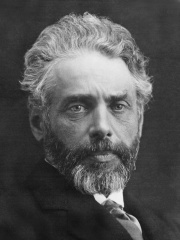
5. Henrik Pontoppidan (1857 - 1943)
With an HPI of 76.76, Henrik Pontoppidan is the 5th most famous Danish Writer. His biography has been translated into 81 different languages.
Henrik Pontoppidan (Danish: [ˈhenˀʁek pʰʌnˈtsʰʌpitæn]; 24 July 1857 – 21 August 1943) was a Danish realist writer who shared with Karl Gjellerup the Nobel Prize for Literature in 1917 for "his authentic descriptions of present-day life in Denmark." Pontoppidan's novels and short stories — informed with a desire for social progress but despairing, later in his life, of its realization — present an unusually comprehensive picture of his country and his epoch. As a writer he was an interesting figure, distancing himself both from the conservative environment in which he was brought up and from his socialist contemporaries and friends. He was the youngest and in many ways the most original and influential member of the Modern Break-Through.

6. Karen Blixen (1885 - 1962)
With an HPI of 75.85, Karen Blixen is the 6th most famous Danish Writer. Her biography has been translated into 73 different languages.
Baroness Karen Christentze von Blixen-Finecke (born Dinesen; 17 April 1885 – 7 September 1962) was a Danish author who wrote in Danish and English. She is also known under her pen names Isak Dinesen, used in English-speaking countries; Tania Blixen, used in German-speaking countries; Osceola, and Pierre Andrézel. Blixen is best known for Out of Africa, an account of her life while in Kenya, and for one of her stories, "Babette's Feast". Both have been adapted as films and each won Academy Awards. She is also noted, particularly in Denmark and the United States, for her Seven Gothic Tales. Among her later story collections are Winter's Tales (1942), Last Tales (1957), Anecdotes of Destiny (1958) and Ehrengard (1963). The latter was adapted to film in 2023 as the romantic comedy Ehrengard: The Art of Seduction. Blixen was considered several times for the Nobel Prize in Literature, but failed to win, according to Danish reports, because of the judges' concern with perceptions of favoritism towards Scandinavian writers.

7. N. F. S. Grundtvig (1783 - 1872)
With an HPI of 69.71, N. F. S. Grundtvig is the 7th most famous Danish Writer. His biography has been translated into 42 different languages.
Nikolaj Frederik Severin Grundtvig (Danish: [ˈne̝kolɑjˀ ˈfʁeðˀʁek ˈse̝vəʁiˀn ˈkʁɔntvi, - ˈfʁæðˀʁæk -]; 8 September 1783 – 2 September 1872), most often referred to as N. F. S. Grundtvig, was a Danish pastor, author, poet, philosopher, historian, teacher and politician. He was one of the most influential people in Danish history, as his philosophy gave rise to a new form of nationalism in the last half of the 19th century. It was steeped in the national literature and supported by deep spirituality. Grundtvig holds a unique position in the cultural history of his country. Grundtvig and his followers are credited with being very influential in the formulation of modern Danish national consciousness. He was active during the Danish Golden Age, but his style of writing and fields of reference are not immediately accessible to a foreigner, thus his international importance does not match that of his contemporaries Hans Christian Andersen and Søren Kierkegaard.

8. Tove Ditlevsen (1917 - 1976)
With an HPI of 69.49, Tove Ditlevsen is the 8th most famous Danish Writer. Her biography has been translated into 25 different languages.
Tove Irma Margit Ditlevsen (Danish: [ˈtsʰoːvə ˈtitle̝wsn̩]; 14 December 1917 – 7 March 1976) was a Danish poet and author. With published works in a variety of genres, she was one of Denmark's best-known authors by the time of her death.

9. Jens Peter Jacobsen (1847 - 1885)
With an HPI of 69.00, Jens Peter Jacobsen is the 9th most famous Danish Writer. His biography has been translated into 32 different languages.
Jens Peter Jacobsen (7 April 1847 – 30 April 1885) was a Danish novelist, poet, and scientist, in Denmark often just written as "J. P. Jacobsen". He began the naturalist movement in Danish literature and was a part of the Modern Breakthrough.
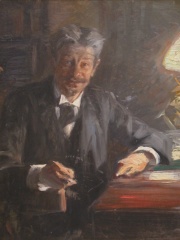
10. Georg Brandes (1842 - 1927)
With an HPI of 68.98, Georg Brandes is the 10th most famous Danish Writer. His biography has been translated into 37 different languages.
Georg Morris Cohen Brandes (4 February 1842 – 19 February 1927) was a Danish critic and scholar who greatly influenced Scandinavian and European literature from the 1870s through the turn of the 20th century. He is seen as the theorist behind the "Modern Breakthrough" of Scandinavian culture. At the age of 30, Brandes formulated the principles of a new realism and naturalism, condemning hyper-aesthetic writing and also fantasy in literature. His literary goals were shared by some other authors, among them the Norwegian "realist" playwright Henrik Ibsen. When Georg Brandes held a series of lectures in 1871 with the title "Main Currents in 19th-century Literature", he defined the Modern Breakthrough and started the movement that would become Cultural Radicalism. In 1884 Viggo Hørup, Georg Brandes, and his brother Edvard Brandes started the daily newspaper Politiken with the motto: "The paper of greater enlightenment". The paper and their political debates led to a split of the liberal party Venstre in 1905 and created the new party Det Radikale Venstre.
People
Pantheon has 53 people classified as Danish writers born between 1621 and 1995. Of these 53, 10 (18.87%) of them are still alive today. The most famous living Danish writers include Jussi Adler-Olsen, Ole Nydahl, and Jens Fink-Jensen. The most famous deceased Danish writers include Hans Christian Andersen, Karl Adolph Gjellerup, and Sigrid Undset. As of April 2024, 1 new Danish writers have been added to Pantheon including Janne Teller.
Living Danish Writers
Go to all RankingsJussi Adler-Olsen
1950 - Present
HPI: 67.25
Ole Nydahl
1941 - Present
HPI: 64.38
Jens Fink-Jensen
1956 - Present
HPI: 64.35
Peter Høeg
1957 - Present
HPI: 61.15
Dorrit Willumsen
1940 - Present
HPI: 55.06
Carsten Jensen
1952 - Present
HPI: 52.64
Pia Tafdrup
1952 - Present
HPI: 51.95
Janne Teller
1964 - Present
HPI: 50.07
Sherin Khankan
1974 - Present
HPI: 47.38
Sandi Toksvig
1958 - Present
HPI: 45.78
Deceased Danish Writers
Go to all RankingsHans Christian Andersen
1805 - 1875
HPI: 90.14
Karl Adolph Gjellerup
1857 - 1919
HPI: 79.92
Sigrid Undset
1882 - 1949
HPI: 78.56
Johannes V. Jensen
1873 - 1950
HPI: 78.43
Henrik Pontoppidan
1857 - 1943
HPI: 76.76
Karen Blixen
1885 - 1962
HPI: 75.85
N. F. S. Grundtvig
1783 - 1872
HPI: 69.71
Tove Ditlevsen
1917 - 1976
HPI: 69.49
Jens Peter Jacobsen
1847 - 1885
HPI: 69.00
Georg Brandes
1842 - 1927
HPI: 68.98
Sven Hassel
1917 - 2012
HPI: 68.81
Martin Andersen Nexø
1869 - 1954
HPI: 67.33
Newly Added Danish Writers (2025)
Go to all RankingsOverlapping Lives
Which Writers were alive at the same time? This visualization shows the lifespans of the 25 most globally memorable Writers since 1700.


